INTRODUCTION
The essence of biography cannot be underestimated, there is no way we can construct a biography of an individual without commenting on the society in which he or she lives. Archbishop Ayo Ladigbolu has an interesting life which mostly revolves around tradition and culture of Yoruba on one hand, and modernity on the other hand. He was born into a typical traditional Yoruba setting where culture and tradition were taught at the very beginning of an individual’s life. He grew up in that traditional society and this predisposed his interest and understanding of culture, most especially Yoruba culture. Indeed, man is a product of his environment. It is important to note here that nearly all the family members of Archbishop Ayo Ladigbolu were Muslims and he was born a Muslim until he converted to Christianity as it will be examined later. Archbishop Ayo Ladigbolu grew through his adolescent stage with this line of thought, that is, manifesting and celebrating culture and tradition as he was taught by his family. He would later convert to Christianity and in the process of becoming a priest, he was exposed to advanced western education and he was offered two different scholarships in Texas, the United States. Having travelled to another continent, he was exposed to different cultures, and modernity and this, coupled with his educational background back home contributed to his understanding of the importance of modernity to every society.

Archbishop Ayo Ladigbolu was then standing between two different but complementing variables, culture on the one hand and modernity on the other hand. He could have abandoned one for the other, but his native intelligence and his education exposed him to the understanding that culture and modernity can complement each other. To this end, he employs modernity to promote culture. He makes the understanding of culture to be more simple, even to the people who are not from his culture. He distinguishes between culture and superstition and he continuously educates people on the fact that they can combine both their Islamic or Christian religion with their indigenous culture on the argument that one is not disturbing the other.
CONCEPTUALIZATION OF CULTURE AND MODERNITY
E.B. Tylor in his Primitive Cultured published in 1891 conceptualizes culture as the complex whole of man’s acquisition of knowledge, morals, belief, art, custom, technology, etc, which are shared and transmitted from generation to generation.[1] Similarly, Onigu Otite and W. Ogionwo observed that culture has material and non-material aspects. According to them, material aspects include products of industry, technology, art, artefacts such as bridges, pots, cutlass, hoes, houses, cooking utensils, handicrafts and other visible things. The non-material aspects of culture consist of the knowledge, attitudes, values, philosophy, morals, language etc. that are shared and transmitted in society.[2] Solomon C. Madubuike also contends that culture is essentially a set of rules which enables a man to live, interact, learn, develop his physical capabilities and adjust to any environment.[3] In other words, culture involves basic ethics, beliefs, values and norms guiding the existence of a particular society. Culture is the embodiment of peoples’ way of life. It includes but is not limited to language, dressing, hairstyle, food, greetings, occupation, association, religion, belief system, political system, financial system and social system.
Modernity on the other hand is a broad concept, it cuts across almost every sphere of life and it will be almost impossible to have one all-encompassing and flawless conceptualization of it. What is most important to note is the fact that modernity has to do with progress, it has to do with the transformation from the old way of life to a modernized one. Simmel argues that modernity is expressed in the conflict between culture and society, the tendency for culture to become a detached from the individual and become objectified in external societal forms. He went ahead to describe the tendency as the tragedy of culture.[4] Norbert Elias also contends modernity as the imposition of the order of civilization on subjectivity.[5] It is relevant to stress that modernity in not anti-culture, it is instead, a progressive mean of maintaining society and it ensures the progress in human civilization. Culture is not stagnant, rather, it is dynamic and the dynamism in culture is mostly facilitated by modernity.
CULTURAL BACKGROUND OF ARCHBISHOP AYO LADIGBOLU
The present Oyo kingdom is the remnant of the defunct Old Oyo Empire. It is located in Yorubaland (South western Nigeria).[6] The Old Oyo Empire was one of the Empires that reigned in precolonial West Africa. The Old Oyo Empire collapsed in the first half of nineteenth century while the present Oyo Kingdom was re-established around that period.[7] The present Oyo kingdom is located in south western Nigeria. The Oyo Kingdom is known to be highly conservative and committed to the preservation of Yoruba culture and tradition. Virtually all the Yoruba cultures and traditions are still in practice in Oyo up till today. Despite the western influence and foreign cultures and religions, a sizable amount of the people of Oyo still hold on to the Yoruba traditional marriage, naming, occupation, dressing and religion. The Alaafin’s palace is the epitome of Yoruba culture. Sango(god of thunder), Ogun(god of iron), Obatala and other traditional gods are still being worshipped the same way Islam and Christianity are being treated. It is therefore unusual to see a prince or princess of Oyo ruling houses who are not rooted in culture. This validates the popular assertion that Man is necessarily a product of his environment. It is this environment that Archbishop Ayo Ladigbolu was born into.[8]

Archbishop Ayo Ladigbolu was born at Obayanrita compound, Oyo Kingdom of Oyo State, Nigeria on June 27, 1938. He was born by Alhaji Raji Akee Ladigbolu (His father) and Ayomo Munirat Aderonke Ladigbolu (His mother) His father was one of the princes of Alaafin Siyambola Ladigbolu I who reigned between 1911 to 1944.[9] Being a prince who was born and raised around the palace, his growing up was full of fun and exciting memories. Growing up among his peers, they would follow horsemen to gather grasses and play with horses. He would engage in “Ayo Olopon” (traditional Yoruba game), and wrestling. At the age of six in 1944, he was enrolled in an Arabic school which occupied most of his time. Despite this, he still managed to engage in the “Ayo Olopon”(traditional Yoruba game), wrestling and he spent much of his time watching events taking place at the palace such as the “Egungun” (Masquerade) festival, “Oro”(Traditional ritual) festival, and chieftaincy installation ceremonies at the palace. There was always one traditional ceremony or the other at the palace every week. Through all these experiences, he was exposed to Yoruba cultural values and practices such as Ewi, (poem), Owe (Proverbs), folklores, dirge, eulogy and other traditional practices such as dressing, greeting, rituals, and all kinds of traditional festivals.[10] At the Arabic School, he was the fastest learner among his colleagues. This eventually made him graduate from the Arabic school ahead of his mates.[11] The environment in which Ayo Ladigbolu was born and raised remarkably predisposed his adherence to culture.
HIS EXPOSURE TO MODERNITY THROUGH EDUCATION AND TRAVEL
In January 1952, at the age of 14, Archbishop Ayo Ladigbolu was enrolled in L.A Primary School Isale Oyo, Oyo State, Nigeria. Ayo Ladigbolu and one Ipadeola Ojo were the oldest students in their class, but he did not find the understanding of what they were being taught in school difficult. His Arabic knowledge coupled with his age as well as his exposure to events at the palace immeasurably sharpened his brain and enlarged his intellectual horizon. He was so brilliant that the school had to promote him from elementary one to Standard one. This implies that he had triple promotions in a year.[12] He proceeded to Durbar Modern Secondary School, Oyo in 1957 where he spent the next three years of his educational life.[13] After graduating from Durbar Modern Secondary School, he worked as a teacher in one of the villages under the Oyo Kingdom and it was during this period that he converted to Christianity. His conversion to Christianity could be credited to his friend who was also a teacher at the village. It was his friend who introduced him to Christianity and he eventually accepted. [14] Having converted to Christianity, he was enrolled in the United Missionary Society Theological College, Ilorin. He spent three years learning there. It was there he learnt about Evangelism and World Religion.[15]
After graduating from the United Missionary Society Theological Church Illorin, he worked at Kaima now under Kwara State, Nigeria and it was during his stay at Kaima that he got married to his wife in 1964.[16] By 1970, he and his wife left Kaima for Ibadan where he was to enrol in Emmanuel College and the University of Ibadan at the same time.[17] In 1973, he proceeded to Southern Methodist University, Dallas, Texas, the United States for two years scholarship, but by the time he graduated in 1975, he had secured another scholarship, making him the first African student to win the Ralph Stoody West scholarship in religious Journalism. The scholarship offered him an opportunity to study for an MA in Mass Communication at Southern University, Texas.[18] The fellowship lasted for two years- from 1975 to 1977. He returned to Nigeria in 1977 to continue his evangelism career in Methodist Church Nigeria till he retired in 2005 as an Archbishop.[19]
Archbishop Ayo Ladigbolu in the United States
It is important to stress how he accumulated experiences in schools, in service as a clergy man in Methodist Church, Nigeria and those he exposed to in the United States contributed his better understanding of the essence of modernity. Having exposed to modern way of life in the United States, he understood that for his society to be globally recognized, its culture and tradition must be preserved and promoted in modernized way.
MODERNIZING YORUBA CULTURE AND TRADITION
Archbishop Ayo Ladigbolu had been involving himself in the promotion and preservation of Yoruba culture long before he finally retired from Methodist Church, Nigeria, however, his retirement in 2005 was a defining moment in the sense that he could now have all the time he needed in his quest to preserve, promote and modernize Yoruba culture and tradition. In all honesty, his cultural background and his exposure to modernity through education and travelling across borders prepared him for a new task and in the process of implementing the new task, three options were open to him.
One, to dedicate his life to culture and tradition, two, to abandon culture and tradition for modernity, and three, to establish a synergy or a compromise between culture and tradition on the one hand, and modernity on the other hand. Interestingly, he chose the last option which is to encourage a compromise between culture and tradition and modernity. In all fairness, culture and tradition and modernity are not against each other they are complementing each other because while culture and tradition have to do with the legacy of the originators or ancestors of a particular society, modernity provides a progressive way of mobilizing culture and tradition for the development of the society. This is slightly similar to Leopold Senghor’s negritude which is the combination of indigenous tradition and western ideas.

Archbishop Ayo Ladigbolu and his wife, Maltida Ladigbolu
The first cultural festival Archbishop Ayo Ladigbolu spearheaded immediately after he retired from the Methodist Church, Nigeria was the Oyotoro traditional festival. It was the first traditional festival that was aimed at celebrating Oyo and uniting all the sons and daughters of Oyo at home and in Diaspora. It was held in 2005 and it was massively attended. However, the festival that was supposed to be an annual traditional festival was short-lived and it was never held again since 2005.[20] The main reason for the dead of the festival was lack of adequate commitment from some members of the committee.
Since all efforts to bring Oyotoro Festival back to life ended in futility, it was decided to be replaced by Oranyan Festival. After deliberation by the committee chaired by Archbishop Ayo Ladigbolu, the prominent people in Oyo like Prof. Wade Abimbola, Prof. Bade Ajayi, Prof. R.O Lasisi, Dr. Adebayo Faleti, and so forth were consulted before it fully commenced in 2008. Oranyan Festival is a cultural festival aimed at uniting the people of Oyo and the Yoruba nation. It is an annual festival and was initiated to celebrate the Alaafin Oranyan, the first Alaafin of Oyo. Oranyan’s influence was not limited to Oyo as he spread his tentacle as a nation builder to other cities like Benin, Ife etc. In essence; the organizers believe that the celebration of the Oranyan festival would bring all the Yoruba home and abroad together to celebrate their identity and their progenitor. One remarkable thing about the festival, most especially the first one is that it was given regional colouration (West Africa). Representatives of Yoruba communities in Ghana (Ewe), Togo, Benin Republic e.t.c were in attendance. Oloyotunji of Oyotunji in California, United States was invited. It was considered a huge success and Oyo played a host to the entire guests. It was said that about ten thousand people attended the festival.[21]
One is inclined to ask: why is a retired Archbishop involving himself in a traditional festival? Oranyan festival, to many, most especially the adherents of Islam and Christianity, is an art of paganism. But in reality, the Oranyan festival is not the same as Sango or Ogun festival in the sense that he (Oranyan) is not being worshipped, rather, he is being celebrated. It is the celebration of an icon, a nation builder and the founder of the Oyo Kingdom. According to Ayo Ladigbolu[22]
To buttress his above submission, all the programmes of events that are assigned for each of the days of the festival week have no connection with the core ritual. They include an Educational programme, a Recreational Programme, Wrestling, a Public lecture, an Exhibition of Yoruba culture, a Demonstration of oath-taking in Yorubaland and finally Grand finale on the last day.
Archbishop Ayo Ladigbolu was also the chairman of the committee that made arrangements for the installation of Are-Ona-Kankanfo otherwise known as the Generalissimo of Yorubaland. The installation is highly traditional and all the arrangements were made by Archbishop Ayo Ladigbolu and his team with the support of the immediate past Alaafin of Oyo, Oba Lamidi Adeyemi III.[23]
Ayo Ladigbolu’s adherence to culture is not limited to traditional festivals and the Oyo Kingdom. For about thirty years, he had been absorbed in the socio-cultural and political development of Yorubaland. He was among the founding fathers of Yoruba Parapo, a socio-cultural organization which had Awujale, Alaafin and Ooni as its Patrons. As time progressed, Ayo Ladigbolu alongside Adeyinka Adebayo, Elder Sofola, Bode Akindele, Bode Amoo, and M.O Ogunmola established the Yoruba Council of Elders, another Socio-cultural organization for the development of Yorubaland. They were quick to encounter a challenge that adversely affected both organizations. Yoruba Parapo became less active while Yoruba Council of Elders became more of a political than a socio-cultural group. It took the intervention of HID Awolowo and the late Ooni Sijuade to resolve the differences and establish another organization. The new organization was decided not to be political, but a socio-cultural and embrace people from all political divides. The organization would be called Yoruba Unity Forum. HID Awolowo was the Matron until her death. Bishop Bolanle Gbonigi was the chairman while Archbishop Ayo Ladigbolu was the deputy chairman, but with the death of Bishop Bolanle Gbonigi, the leadership of the Forum fell into the hands of Archbishop Ayo Ladigbolu. The Yoruba Unity Forum is also part of the Southern Nigerians’ People Assembly, an organization that comprises the South-South, South-East and South Western States of Nigeria. The Yoruba Unity Forum remains autonomous within the Southern Nigerians’ People Assembly.[24]

In continuation of his quest to modernize the culture and tradition of Yorubaland, Archbishop Ayo Ladigbolu constituted a team of educated elders and they embarked on collecting an oral history of all the compounds in the Oyo Kingdom. He believes that every compound history is to be documented because it is in the understanding of one’s history that one can understand him or herself. The collection of oral history is challenging but it is still ongoing. In addition, he is always available to help the Yoruba in the diaspora to trace their history back to their ancestral home in Yoruba land, Nigeria. He had assisted not fewer than four families to trace their history to their ancestral home in the Oyo Kingdom.[25]
CONCLUSION
In conclusion, Archbishop Ayo Ladigbolu has established himself as a modern man who is well-rooted in culture and tradition. He is a Prince of the Oyo Kingdom and his upbringing at the palace influenced his understanding of Yoruba culture and tradition. However, his western education and his journey across the border further exposed him to modernity. He spent about four years in Texas before returning to Nigeria. He retired from Methodist Church, Nigeria in 2005 and ever since then, he has been committing himself to the preservation, promotion and modernization of Yoruba culture. He was close to the immediate past Alaafin of Oyo, Oba Lamidi Adeyemi III and this offered him more opportunities to participate in almost all cultural activities at the palace. Finally, he believes that culture and tradition and modernity can co-exist and that they complement each other. He also contends that culture can be mobilized for the development of the Yorubaland as no society can develop outside its culture.
REFERENCES
[1] E.B Taylor in O. Otitte and W. Ogionwo’ (1979) An introduction to Sociological Studies, Ibadan: Heinemann Educational Book PLC. pp 30 – 31.
[2] O. Otitte and W. Ogionwo’ (1979) An introduction to Sociological Studies, Ibadan: Heinemann Educational Book PLC. pp 30 – 31
[3] Solomon C. Madubuke’s (2003) Culture: Man, Society and Development, Ibadan: Demyaxs/Law Books. p. 2.
[4] George Simmel in Gerrad, D.E, (1999) Social Theory in a Changing World, UK: Polity Press. Pp. 5-9
[5] Norbert Elias in Gerrad, D.E, (1999) Social Theory in a Changing World, UK: Polity Press. Pp. 5-9.
[6] Yoruba is one of the major ethnic groups in Nigeria. The Yoruba can be found mostly in south western Nigeria, some Yoruba can also be found in some west African countries such as Togo and Benin Republic. There are Yoruba outside Africa most especially Brazil, Cuba and the United States. Among the popular towns in Yorubaland in Nigeria are Oyo, Ife, Abeokuta, Ede, Eko, Osogbo, Ondo, Ekiti etc. See Akinwumi Ogundiran’s “The Yoruba: A New History”
[7] Atanda, J.A (1973) The New Oyo Empire, London, Longman Group Limited. P.40.
[8] Dr. Ayobami Sanda. Age-43. Civil Servant. Interviewed at Oyo on 29/05/2022.
[9] Archbishop Ayo Ladigbolu. Age 84. Retired Archbishop. Interviewed at Oyo on 29/06/2022.
[10] Archbishop Ayo Ladigbolu. Age 84. Retired Archbishop. Interviewed at Oyo on 29/06/2022
[11] Archbishop Ayo Ladigbolu. Age 84. Retired Archbishop. Interviewed at Oyo on 29/06/2022
[12] Archbishop Ayo Ladigbolu. Age 84. Retired Archbishop. Interviewed at Oyo on 29/06/2022
[13] Archbishop Ayo Ladigbolu. Age 84. Retired Archbishop. Interviewed at Oyo on 29/06/2022
[14] Archbishop Ayo Ladigbolu. Age 84. Retired Archbishop. Interviewed at Oyo on 29/06/2022
[15] Archbishop Ayo Ladigbolu. Age 84. Retired Archbishop. Interviewed at Oyo on 29/06/2022
[16] Matilda Ladigbolu. Age 85. Retired Matron. Interviewed at Oyo on 29/06/2022.
[17] Matilda Ladigbolu. Age 85. Retired Matron. Interviewed at Oyo on 29/06/2022.
[18] Archbishop Ayo Ladigbolu. Age 84. Retired Archbishop. Interviewed at Oyo on 29/06/2022
[19] Archbishop Ayo Ladigbolu. Age 84. Retired Archbishop. Interviewed at Oyo on 29/06/2022
[20] Sunday Ladigbolu. Age 30. Farmer. Interviewed at Oyo on 29/06/2022
[21] Archbishop Ayo Ladigbolu. Age 84. Retired Archbishop. Interviewed at Oyo on 29/06/2022
[22] Archbishop Ayo Ladigbolu. Age 84. Retired Archbishop. Interviewed at Oyo on 29/06/2022
[23] Sunday Ladigbolu. Age 30. Farmer. Interviewed at Oyo on 29/06/2022
[24] Archbishop Ayo Ladigbolu. Age 84. Retired Archbishop. Interviewed at Oyo on 29/06/2022
[25] Archbishop Ayo Ladigbolu. Age 84. Retired Archbishop. Interviewed at Oyo on 29/06/2022




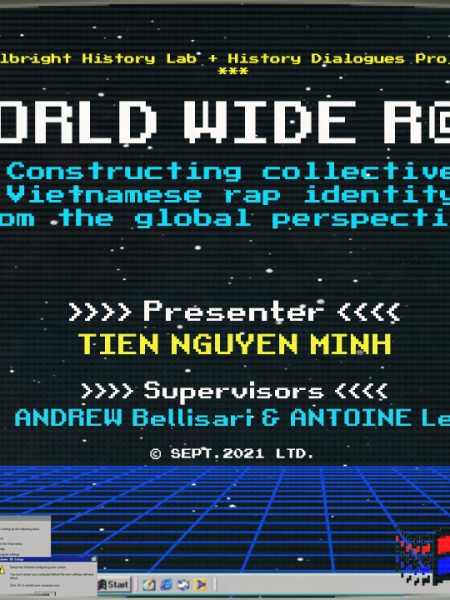
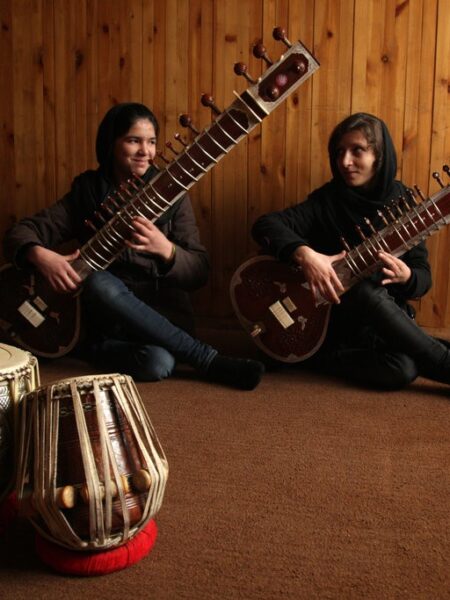
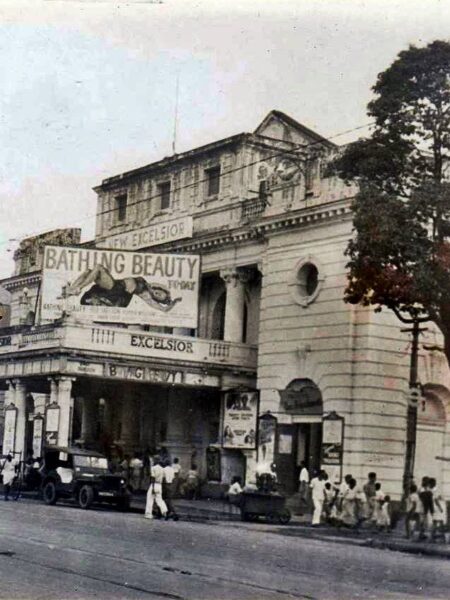
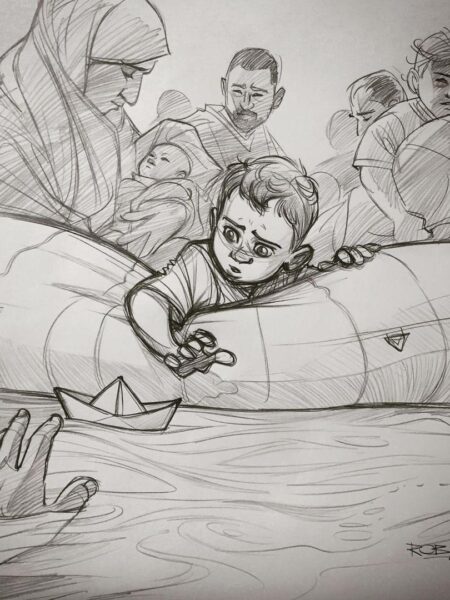


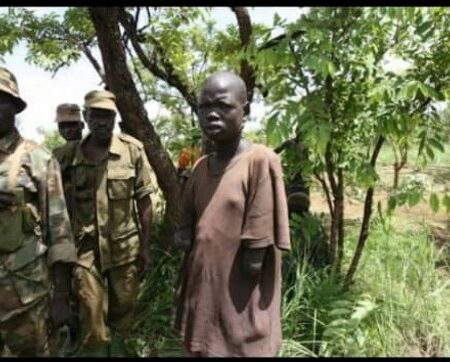
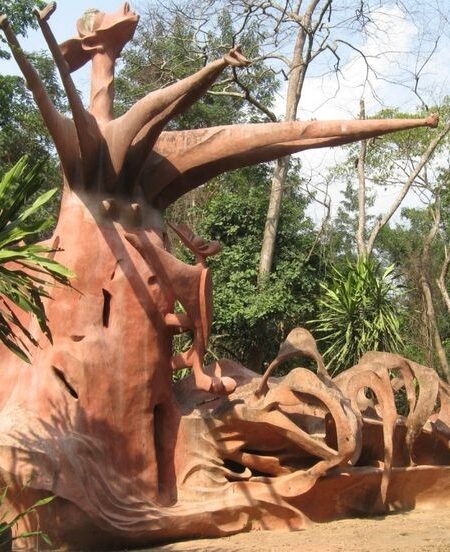

Archbishop Lawrence Ayo Ladigbolu is an erudite scholar.
Nice work.
Thanks
Beautifully Written! Thanks Jamiu! 🥳
The old man, bàbá, is one of the globally-aware clerics we need in this incurably religious country called Nigeria. In my opinion, whoever is global in thought having been humble enough to see the world in its diversity of religion and culture is less likely to be a fanatic. And this proves it.
If China, India, and Japan could combine tradition with modernity, what stops Yorùbáland (Nigeria) from doing so?
As they say, “Only time will tell.”
Thank you, brother